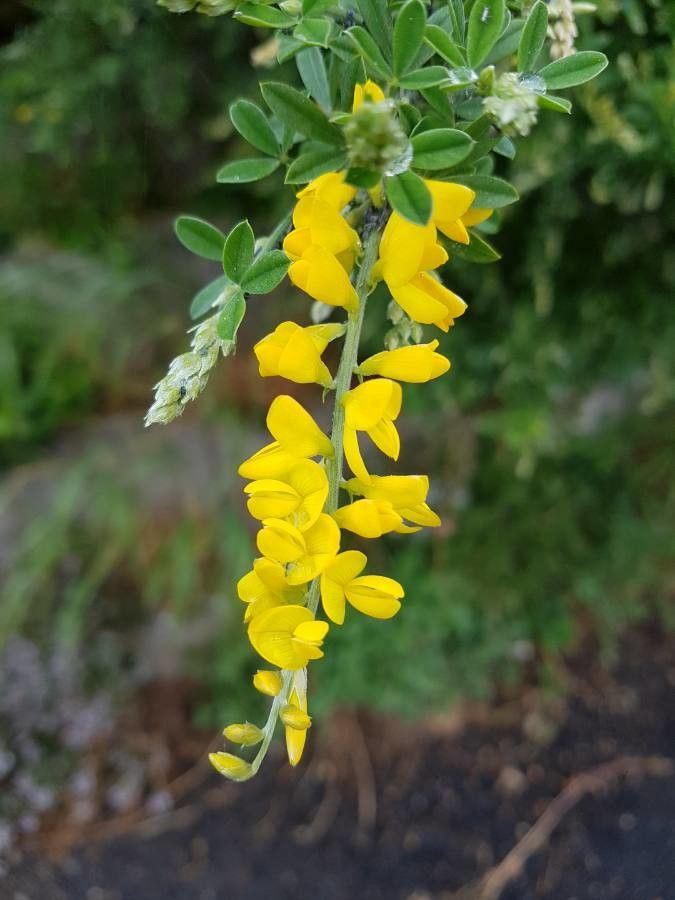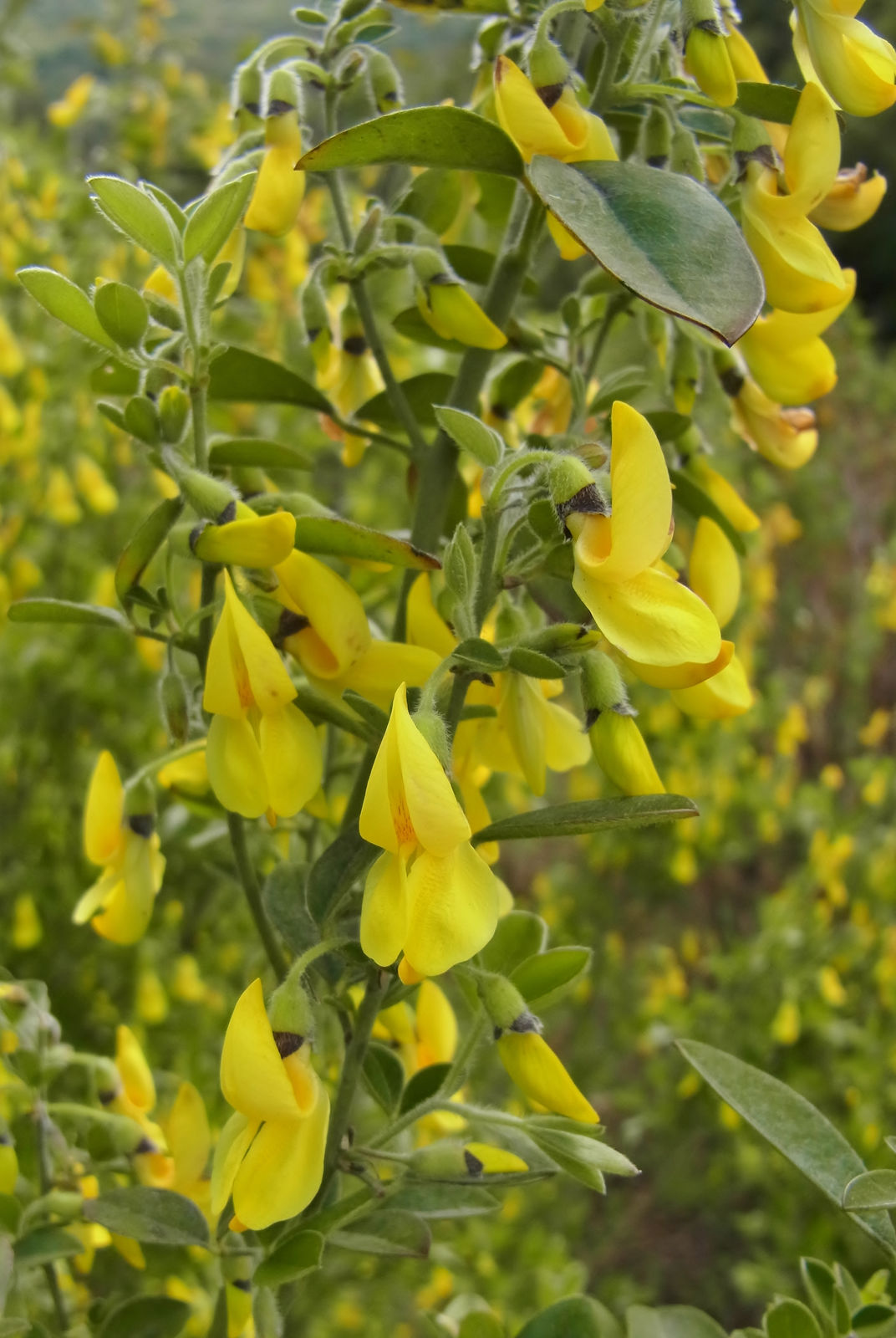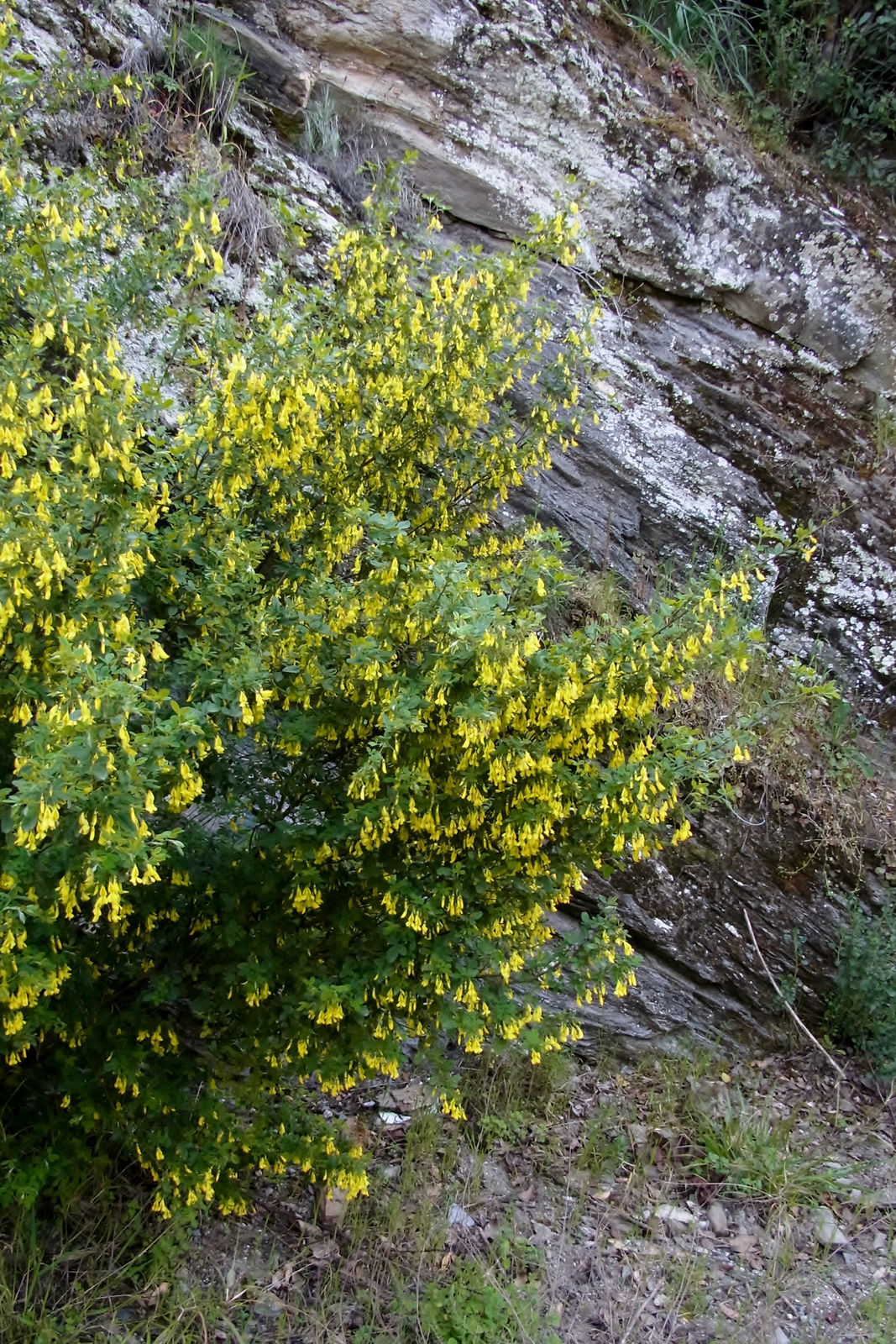Hairy Broom
cytisus villosus
Also known as: ["Hairy Broom","Villosus Broom"]
Overview
A deciduous shrub native to the Mediterranean region, known for its bright yellow flowers and hairy stems.
Benefits & Perks
["fragrant flowers","wildlife attractant (bees, butterflies, birds)","drought tolerant"]
Botanical Classification
| Phylum: | Magnoliophyta |
| Class: | Magnoliopsida |
| Order: | Fabales |
| Family: | Fabaceae |
| Genus: | Cytisus |
| Botanical Name: | Cytisus villosus |
Plant Characteristics
Basic Information
- Category: Shrubs
- Suitable Location: outdoor garden in a sunny, open area
- Suitable For:
- Is Weed: No
- Allergenicity: low
Environmental Needs
- Climate: {"temperatureRange":"5–35°C"}
- Hardiness: {"zones":"7–9"}
- Misting: rarely required, only if ambient humidity is very low
- Drainage: Fast-draining to prevent waterlogging.
- Soil Type: Well-draining, sandy loam with some organic matter.
Maintenance Level
- Maintenance Level: moderate
- Toughness Level: moderate
- Pruning Frequency: Annually, immediately after flowering.
- Pruning Intensity: Moderate; remove up to one-third of the oldest stems to rejuvenate the plant.
Care Details
Ideal Sunlight Coverage:
Full sun (6–8 hours of direct sunlight daily); tolerates partial shade but may produce fewer blooms.
Sunlight Tolerance Tips:
Acclimate plants gradually to intense sunlight if moved from shade; protect from harsh midday sun in hot climates; ensure good air circulation to prevent sunburn.
Care Requirements
Care Difficulty
moderatemoderate
Sunlight
full sun
Rotate plant for even light exposure; use shade cloth in extreme heat; avoid placing in drafty areas.
Watering
every 7–10 days during active growth, reduce in winter
Water thoroughly but infrequently to encourage deep root growth; allow soil to dry partially between waterings; avoid overwatering to prevent root rot.
Soil
well-drained, sandy or loamy soil
pH: Slightly acidic to neutral (pH 6.0–7.0).
Ensure excellent drainage; avoid heavy clay soils; amend with organic matter for better structure.
Temperature
Prefers mild temperatures (60–75°F or 15–24°C); tolerates cooler temperatures but is sensitive to frost.
Avoid sudden temperature fluctuations; protect from frost; ensure good air circulation in hot weather.
Fertilizing
every 4–6 weeks during spring and summer
Fertilize sparingly to avoid excessive foliage growth at the expense of blooms; apply fertilizer to moist soil to prevent root burn.
Propagation
Methods
Stem cuttings taken in late spring or early summer.
Step-by-Step Propagation Guide
- Take 4–6 inch cuttings.
- Remove lower leaves.
- Dip in rooting hormone.
- Plant in medium.
- Keep moist and warm.
Best Time: Late spring to early summer when new growth is firm but not woody.
Environment
Warm (70–75°F or 21–24°C), humid, and partially shaded environment.
Medium
Well-draining mix of peat and perlite or cactus mix.
Hormone
Rooting hormone is recommended to improve success rates.
Timeline
Roots may develop in 4–8 weeks; establish in 3–6 months.
Tools Needed
Pruning shears, rooting hormone, small pots, misting spray bottle.
Quick Tips
Use semi-hardwood cuttings; maintain high humidity; avoid direct sunlight during rooting.
Pruning & Repotting
Pruning Guide
Method
Selective thinning of older stems; light shaping of new growth.
Pruning Plan
Prune to maintain shape, encourage bushiness, and remove dead or weak growth; prune after flowering to avoid cutting off next year's buds.
Tools
Pruning shears, loppers (for thicker stems), gloves.
Checklist
Prune after flowering; remove dead or diseased wood; shape lightly; clean tools after use.
Repotting Guide
Best Season
Early spring before new growth begins.
Pot Size
Increase pot size by 2–3 inches in diameter.
Method
Remove plant gently; trim any circling roots; repot in fresh, well-draining soil with a slightly larger pot.
Suggestions
Repot every 2–3 years or when roots fill the container; beneficial for maintaining vigor and preventing root-bound conditions.
Checklist
Choose appropriate pot size; use fresh soil mix; trim roots if necessary; water thoroughly after repotting.
Advanced Care Tips
Watering Mastery
Watering Checklist
Check soil moisture before watering; water deeply; ensure drainage; avoid wetting foliage.
How to Apply Water Properly
Water at the base of the plant, targeting the root zone; ensure water penetrates deeply (6–8 inches); allow excess water to drain away; water early in the morning to minimize evaporation.
Watering Schedule Tips
Water deeply once every 7–10 days during active growth in spring and summer; reduce frequency to every 2–3 weeks in fall and winter. Adjust based on rainfall and soil moisture retention.
Soil Improvement
Add perlite or coarse sand to improve drainage; incorporate compost for fertility; ensure soil is not compacted.
Temperature Stress Management
Signs of Temperature Issues
Chlorosis (yellowing leaves), leaf drop, stunted growth, or bud drop in response to extreme heat or cold.
Cold Stress
Low temperatures can cause leaf damage, slow growth, or death of tender shoots; frost can be lethal.
Solution: Protect with frost cloth or mulch in winter; move potted plants indoors or to a sheltered location; avoid planting in frost-prone areas.
Hot Stress
Excessive heat can lead to wilting, leaf scorch, or reduced flowering; may go dormant in extreme heat.
Solution: Provide afternoon shade in hot climates; water deeply to cool roots; use mulch to retain soil moisture.
Fertilizing Guide
Fertilizing Checklist
Use balanced fertilizer; apply in early spring; avoid over-fertilizing; water after application.
Fertilizing Method
Use a balanced, slow-release fertilizer in early spring; avoid high-nitrogen formulas; reduce or stop fertilizing in late summer and fall.
Common Problems & Solutions
Toxicity Warning
Cats
Slightly ToxicCats may experience mild gastrointestinal and neurological effects if they ingest parts of Cytisus villosus. The alkaloids present can cause temporary discomfort but are not typically fatal.
⚠️ Symptoms:
🌿 Toxic Parts:
⚡ Toxic If:
if eaten
Dogs
Slightly ToxicIn dogs, ingestion of Cytisus villosus can lead to mild gastrointestinal upset and mild neurological symptoms due to the presence of alkaloids. The effects are typically not life-threatening but can cause discomfort.
⚠️ Symptoms:
🌿 Toxic Parts:
⚡ Toxic If:
if eaten
Humans
Slightly ToxicCytisus villosus contains alkaloids that can cause mild gastrointestinal distress and mild neurological effects when ingested in significant quantities. The physiological impact is generally limited to temporary discomfort.
⚠️ Symptoms:
🌿 Toxic Parts:
⚡ Toxic If:
if eaten
Frequently Asked Questions
Q: Is Cytisus villosus toxic to pets?
A: Yes, it is toxic to both dogs and cats.
Q: Does Cytisus villosus attract wildlife?
A: Yes, it attracts bees, butterflies, and birds.
Q: How difficult is it to care for Cytisus villosus?
A: It has moderate care difficulty, requiring regular maintenance.
Quick Reference
| Family: | Fabaceae |
| Care: | moderate |
| Light: | full sun |
| Water: | every 7–10 days during activ |
Get Expert Care Tips
Download the Plantious app for personalized care reminders and plant identification!
Google Play App Store








